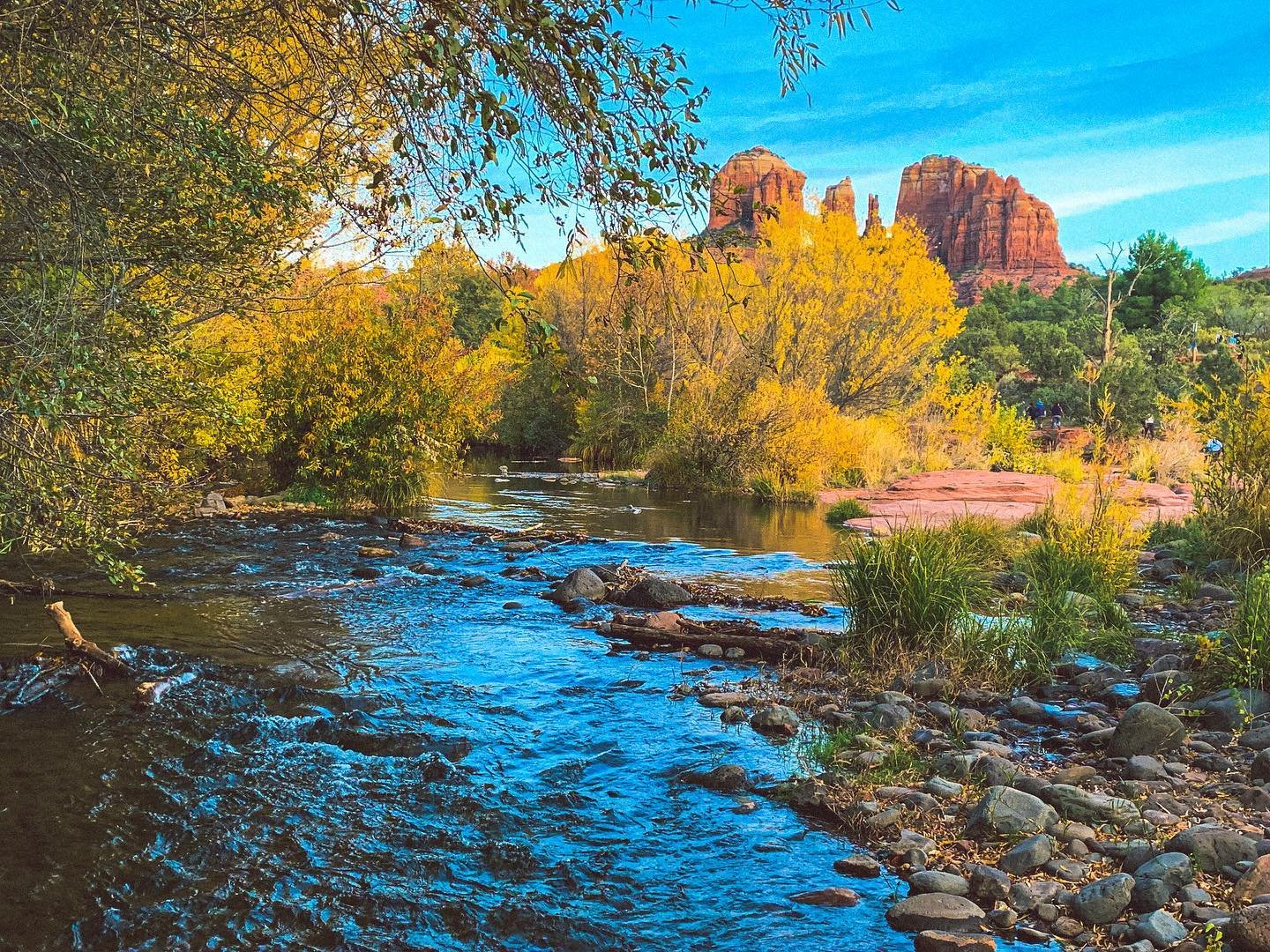Welcoming the Tranquil Transformation of Autumn
After enduring an extended and sweltering summer, the arrival of autumn is a cherished respite. This season beckons us outdoors, offering the gift of cooler temperatures, crisp air, and the earthy scent that envelops forests adorned with fallen leaves.

The Timing of Fall Colors in Arizona
Arizona’s diverse geography and climate ensure that each season unfolds in a unique manner. With a bit of planning, enthusiasts of autumn foliage can witness a tapestry of colors throughout the state. The key factor influencing this natural phenomenon is elevation.
During the summer, leaves appear green due to chlorophyll, the pigment that enables plants to convert carbon dioxide and water into food. As the days grow shorter in autumn, chlorophyll production decreases, causing leaves to shed their green hue. This process reveals the hidden red, orange, and yellow pigments present in each leaf. The first splashes of these vivid colors typically grace the highest elevations, usually by the end of September.
October emerges as the prime month for experiencing fall’s full glory. It’s the pinnacle of the autumn spectacle, especially when it comes to the blazing aspens that adorn mountain slopes. Early to mid-October is your golden window to embark on hikes and scenic drives around Flagstaff, Williams, and the White Mountains.
In the latter part of October, the vibrant transformation gradually descends to lower altitudes. You’ll encounter gambel oak, sumac, velvet ash, boxelder, and bigtooth maple in the Mogollon Rim area, as well as in places like Oak Creek Canyon in Sedona and the Pinal Mountains near Globe.
Unveiling the Top Spots for Fall Colors in Arizona
Flagstaff

The Aspen Nature Loop, a gentle 2.5-mile trail, meanders through scenic forests and meadows, framed by breathtaking views of Kendrick Peak and the towering San Francisco Peaks.
For a more extensive adventure, the Kachina Trail extends 5 miles one way, tracing the base of Agassiz Peak. Along this route, you’ll encounter a medley of Douglas firs, limber pines, pale-barked quaking aspens, and a lush garden of bracken ferns that turn a rich brown in the crisp autumn air. Both trails commence from the Arizona Snowbowl parking lot north of downtown Flagstaff.
For an unforgettable high-country experience, set out on the Inner Basin Trail from Lockett Meadow. This trail winds through forests and meadows, ultimately leading you to a golden bowl nestled within the ancient caldera of a volcano, now cloaked in a sea of aspens.
White Mountains
In the White Mountains, embark on a scenic journey along State Highway 260, connecting the communities of Pinetop-Lakeside and Eagar-Springerville. Allow your windshield to frame swaths of lemon and saffron as you traverse in and out of enchanting aspen forests. Along the way, you’ll encounter small lakes, offering picturesque spots for picnics and photo opportunities. One of the most reliable leaf-peeping locations is Big Lake, situated south of Greer off State Highway 273. This 575-acre lake, partially surrounded by forest, boasts aspens, maples, oaks, and boxelders that mirror their vibrant hues on the water’s surface.
Mogollon Rim
Commencing around the middle of October, Rim Country, centered around the Mogollon Rim, becomes adorned with autumn’s finest attire. Drive along Forest Road 300, known as the Rim Road, which stretches between State Highways 260 and 87. This 51-mile route, mostly unpaved but manageable for cautious sedan drivers, promises vivid hues and panoramic vistas. En route, you’ll encounter groves of aspens and oaks, along with overlooks providing breathtaking views. For a memorable hike, embark on the See Canyon Trail, adorned with the scarlet of bigtooth maples, the yellows and golds of velvet ash, and Gambel oaks.
Sedona

As SR 89A traces northward from Sedona, it closely follows the creek, treating you to dramatic vistas at every turn. As the canyon narrows, a canopy of cottonwoods, velvet ash, Arizona sycamore, alder, and willow trees forms overhead, casting dappled shadows on the road. Beneath this verdant canopy, sumac and a tangle of canyon grape and Virginia creeper contribute additional layers of color.
For an immersive experience in this autumn wonderland, hike the West Fork Trail along Oak Creek. As you traverse between canyon walls and repeatedly cross a shallow creek, you’ll find yourself surrounded by a kaleidoscope of colors. Start your journey from the Call of the Canyon Picnic Area, located 9.5 miles north of Sedona. Please note that fall is a peak season, so expect crowds and limited parking. Opt for an early morning visit or consider a weekday excursion.
Duration of Fall Colors in Arizona
The display of fall colors can extend well into November and even December in lower elevations. Seek out riparian corridors, where mixed woodlands featuring cottonwoods, willows, sycamores, sumac, walnuts, and more abound.
The Verde Valley offers numerous options, with color typically peaking in early to mid-November. Parsons Trail near Cottonwood leads into Sycamore Canyon, guiding you through a leafy tunnel of mixed trees. Covering just under 4 miles, this trail leads to Parsons Spring, a wide marshy area that serves as a turnaround point.
Additional fall color destinations within the Verde Valley include Bell Trail, which meanders above tree-lined Wet Beaver Creek, and West Clear Creek Trail, ascending through a lush forest draped along the water. Both trails provide moderate day hikes and abundant opportunities for delightful autumn picnics.
A Late Show at Boyce Thompson Arboretum
Fall colors make a grand finale at Boyce Thompson Arboretum near Superior. The Main Trail guides you on a 1.5-mile loop through lush gardens featuring honey locust, soapberry, canyon hackberry, black walnut, and Arizona sycamore.
As you follow the trail, you’ll encounter Magma Ridge with its distinctive outcroppings. Further along, you’ll pass through a grove of Chinese pistachio trees, their burgundy foliage framed by golden hedges of pomegranate. Expect yellow-leaved trees.





